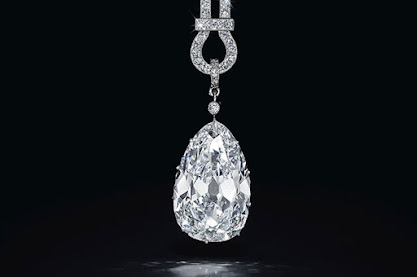Russian PGMs not a subject to sanctions!
Russia
can trade PGMs to Western customers
While Anglo American Platinum announced that nearly all of the semi-finished inventory ahead of the ACP converter plant was processed in 2021, their published data does not reflect that the full platinum content of that processed inventory was either sold or increased their refined metal inventory.
It is possible that the disruption associated with the outages and significantly higher processing rate in 2021 has resulted in approximately 150 koz of platinum remaining locked up in their process pipeline.
While
this 150 koz is included in our published 2022 forecast for refined production,
this flow of material may influence stock management decisions necessary in
2022 to support planned furnace rebuilds. Refined mine supply is projected to
be stable given the additional work the producers have put into preventative
maintenance and stope development.
Although wage negotiations start mid-year, and employees will certainly be conscious of the massive dividend pay-outs from the PGM miners and gold producer agreements recently reached, which have historically influenced PGM outcomes; either way, associated strike disruptions would likely fall into 2023.
There is a possibility of mine supply disruptions from delays to downstream processing maintenance, with some rebuilds planned during the year, worsening power supply instability in Southern Africa, or a reduction of Russian PGM supplies associated with the invasion of Ukraine.
Addressing the potential for reduced PGM supply from Russia, both security of supply concerns and sanctions could impact short and long-term metal flows. Historically, sanctions applied to other commodities such as aluminium, resulted in a short period of interruption until metal flows adjusted into countries not applying sanctions, which can then free up flows from elsewhere.
While
so far, Russian producers have not been subject to sanctions that would prevent
them selling platinum or palladium to Western customers, restrictions already
imposed on the international SWIFT payment notification system appear more
likely to interrupt short term metal flows. For platinum, this would compound
an already tight physical market and add to price volatility.
However, security of supply and certificate of origin concerns could push automakers to reduce their reliance on Russia, which given Russia accounts for almost forty percent of global palladium supply but only eleven percent of global mined platinum supply, could naturally result in additional platinum for palladium substitution longer-term.
Furthermore, it could be argued that a strategic push to accelerate production of green or pink hydrogen would help reduce Europe’s imports of natural gas from Russia.
Although it would take an almost herculean infrastructure push, blending in 20% of hydrogen into Europe’s natural gas networks, which is technically achievable, could halve Russian gas imports. One noteworthy additional consideration is a potential impact on Battery Electric Vehicles (BEVs) is that Russia accounts for c.20% of class 1 nickel production globally, an essential input into lithium ion batteries.
While
China could easily absorb any of this material diverted from the west (most of
it probably goes to China already), there is the question of whether Western
automakers will be happy to use batteries that contain Russian origin nickel,
which could potentially distort the market, hindering the pace of growth in
BEVs. This principle could indeed also enhance platinum for palladium
substitution.
We don’t expect Russian sanctions to have a material impact on recycling, which is expected to be up 4% year-on-year (+78 koz). Capacity constraints seem to be easing, but raw material supply remains inversely linked to automotive production rates as the semiconductor shortage has forced consumers to run older vehicles for longer.
In terms of demand, the ongoing semiconductor shortage is continuing to impact vehicle production rates, but this is expected to ease as 2022 unfolds. Positively, automakers are prioritising higher margin vehicles which is generally good for platinum demand.
But there is also an ongoing push for BEVs particularly in Europe where automakers need to minimise fleet emissions, although emerging battery material supply constraints could prove a limiting factor, which could benefit ICE.
Longer term, it is also interesting to note that a number of automakers have announced they are developing Euro 7 compliant diesel engines, indicating that they have some reservations that the pace of electrification is sustainable or possible.
Jewellery demand remains muted versus historical levels but flat on 2021. China looks likely to remain subdued in the near-term, but there is the potential for upside in Japan, historically a strong market for platinum jewellery, as COVID restrictions ease.
It is also encouraging to see good growth in India where Q4’21 platinum demand leapt 88% year-on-year to 38 koz and could continue to surprise to the upside. Industrial demand reached record levels in 2021, being the second most significant sector of consumption of platinum for the third year in a row. We are expecting a cyclical easing of industrial demand in 2022 due to fewer capacity additions, particularly in glass, but it will be interesting to see if Russian sanctions have any impact on demand from the petroleum sector.
The UK, for example, has banned the export of oil refinery equipment to Russia, which is likely to include platinum containing catalysts. Investment demand will probably be the most keenly watched part of the platinum landscape as it can provide an indicator of real demand for platinum in the spot market.
We’re expecting another strong year for bar and coin demand, but only modest ETF demand, although this is an area within which we could see upside depending upon the outlook for the PGM mining equities. The main focus is likely to remain on NYMEX stocks as an indicator of the level of demand for metal in the spot market.
As
seen in the second half of 2021, tight market conditions can support the spot
price relative to the forwards, creating an arbitrage that draws stocks away
from NYMEX to satisfy demand for metal in the physical market, which as in 2021
will likely be demand into China.








Comments
Post a Comment